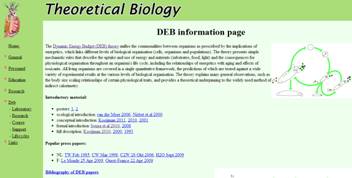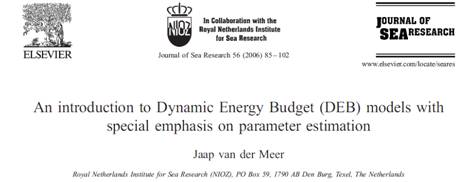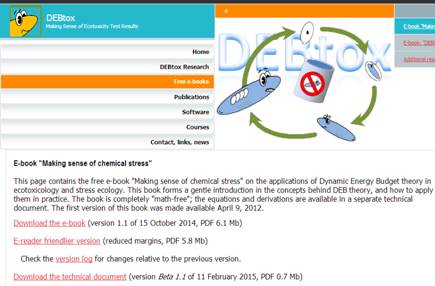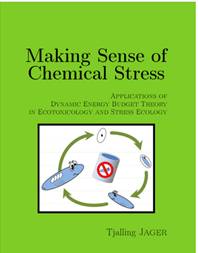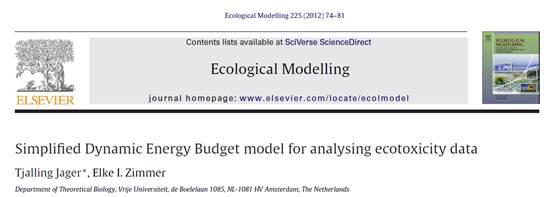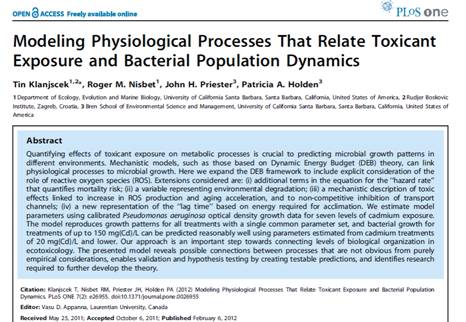Dynamic Energy Budget (DEB) models
2.1. Introduction
The Dynamic Energy Budget (DEB) models are based on a theory with the same name (DEB theory). Briefly, this theory aims to identify simple quantitative rules for the organization of the metabolism of individual organisms that can be understood from basic principles. The word "dynamic" refers to the life cycle perspective of the theory, where the budget changes dynamically over time. One of the applications of this theory in the field of environmental risk assessment is the assessment of the effects of toxicants on individuals and populations, as well as the biodegradation of toxicants.
A summary of the DEB theory as well as a comparison of this theory with other different alternative approaches can be found in the following paper:
More useful sources on DEB models:
http://www.debtox.info/book.php
2.2. Case study
Read the following article:
doi:10.1371/journal.pone.0026955
http://journals.plos.org/plosone/article?id=10.1371/journal.pone.0026955
Answer the following questions:
1 - Explain the main aim of this experiment.
2 - Why was the DEB model developed in this study?
3 - What were the main conclusions of this work?
